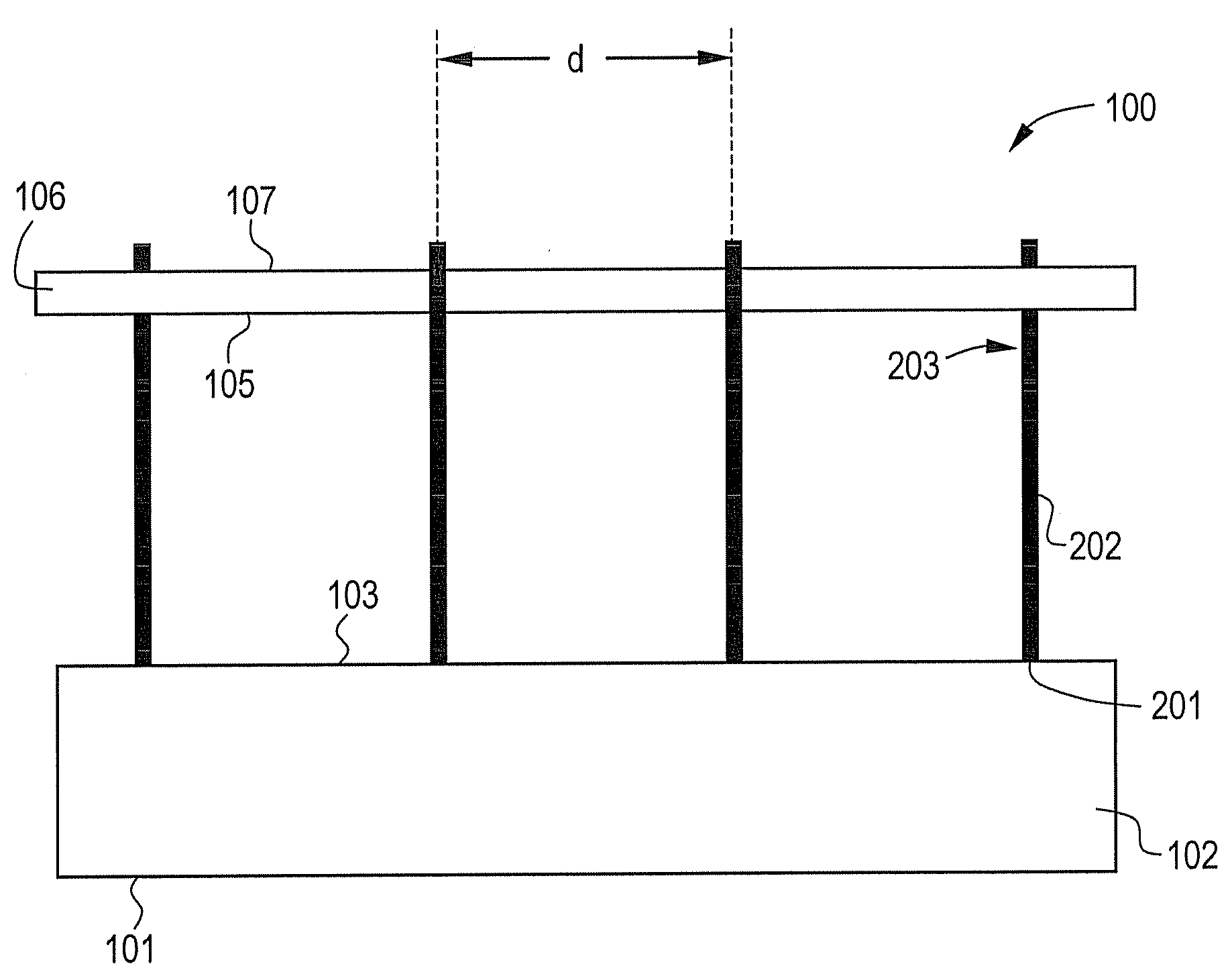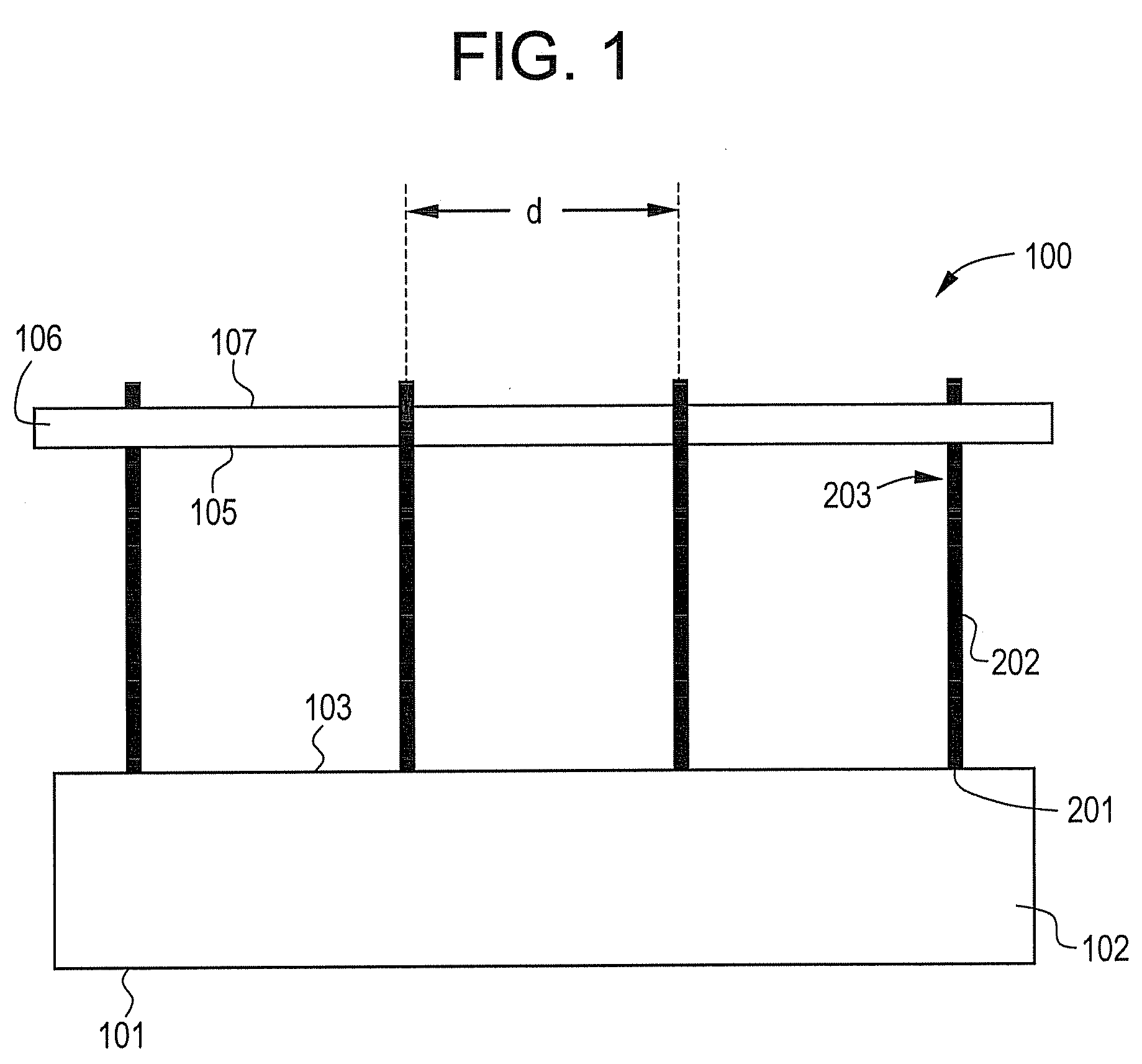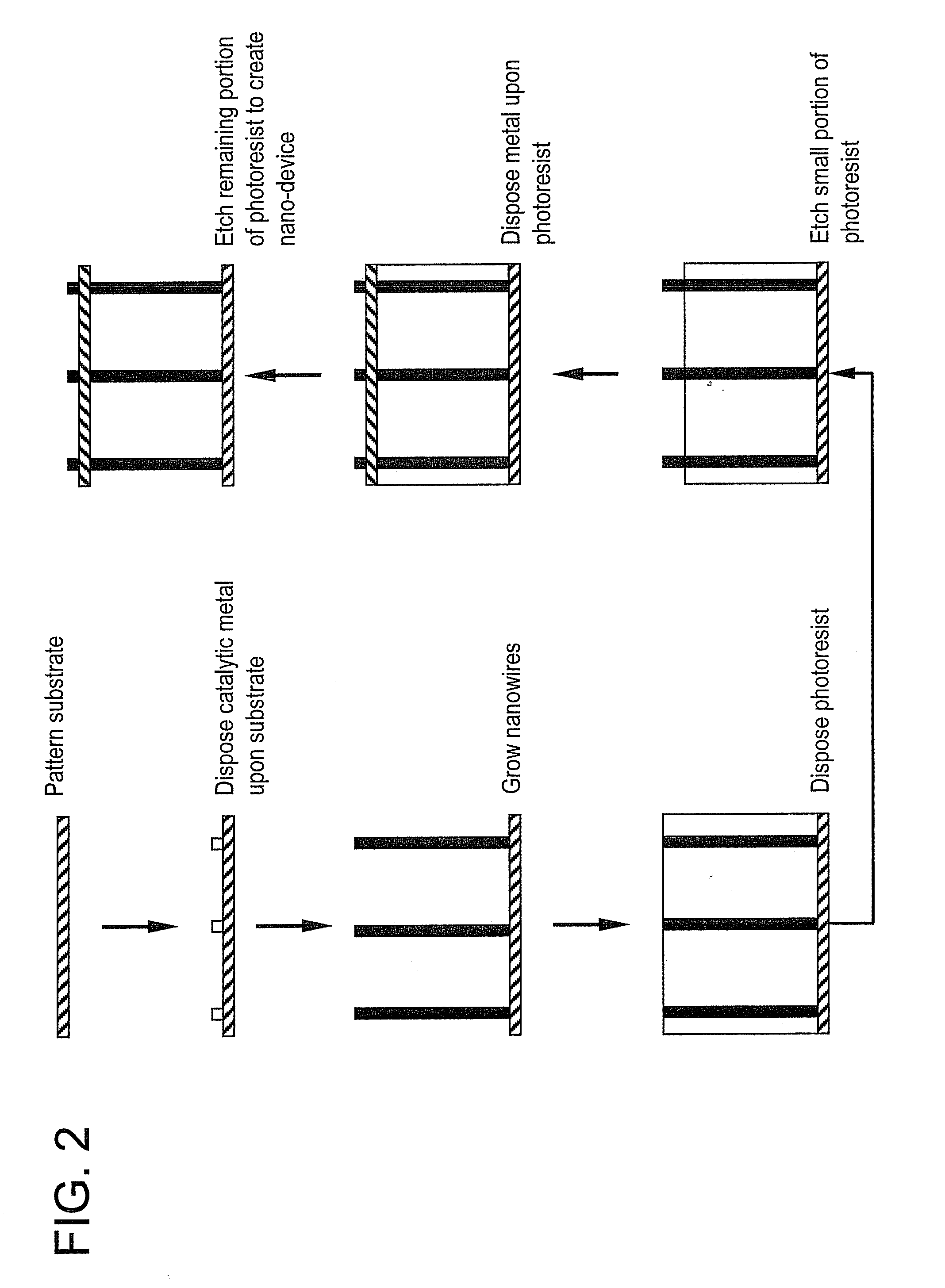Nano-devices and methods of manufacture thereof
a technology of nano-devices and manufacturing methods, applied in the field of nano-devices, can solve the problems of poor electrical contact between the nano-wire and the second substrate, mechanical damage to the nano-wire, and poor control of the number of nano-wires transferred and the position of the transferred nano-wires on the second substra
- Summary
- Abstract
- Description
- Claims
- Application Information
AI Technical Summary
Problems solved by technology
Method used
Image
Examples
example
[0053]This example was conducted to demonstrate a method for manufacturing the nano-device disclosed herein. A silicon wafer was used as the substrate. A pattern of 0.7 to 0.8 micrometer diameter gold catalyst dots was disposed on the substrate using photolithography. The gold catalyst was 5 nm thick and was deposited by electron beam evaporation onto a double layer liftoff photoresist structure. The liftoff was performed in standard resist solvents (acetone and N-methyl pyrrolidone based solvents). Silicon nanowires having a length of approximately 3 micrometers were grown perpendicular to the silicon wafer surface using thermal chemical vapor deposition. The wires were then coated with amorphous silicon and indium tin oxide (ITO), giving the nanowires a rough grain structure observed in the SEM image shown in the FIG. 5.
[0054]A □micrometer thick layer of photoresist was spin coated onto the substrate containing the nanowire array, filling in the gaps between wires and forming a ...
PUM
 Login to View More
Login to View More Abstract
Description
Claims
Application Information
 Login to View More
Login to View More - R&D
- Intellectual Property
- Life Sciences
- Materials
- Tech Scout
- Unparalleled Data Quality
- Higher Quality Content
- 60% Fewer Hallucinations
Browse by: Latest US Patents, China's latest patents, Technical Efficacy Thesaurus, Application Domain, Technology Topic, Popular Technical Reports.
© 2025 PatSnap. All rights reserved.Legal|Privacy policy|Modern Slavery Act Transparency Statement|Sitemap|About US| Contact US: help@patsnap.com



